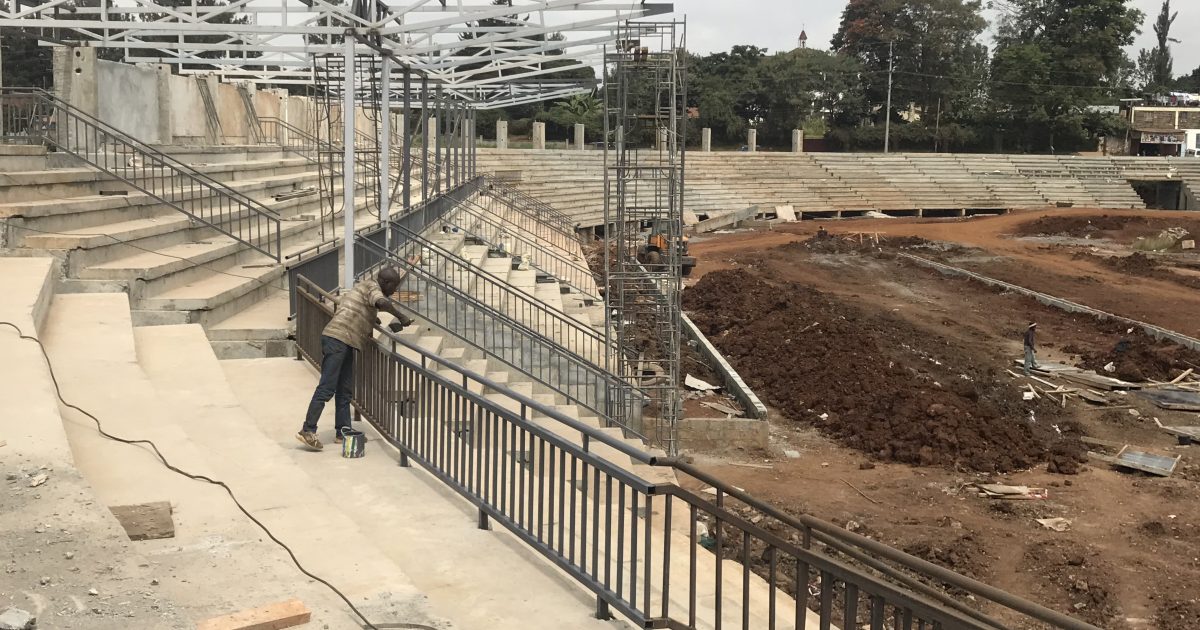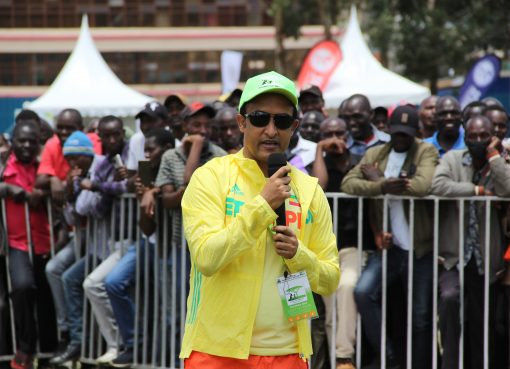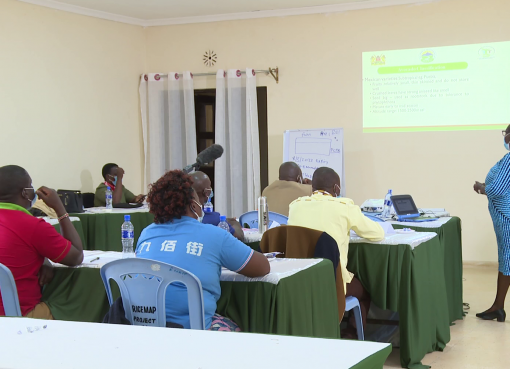Technological advancements have led to making operations in various sectors of the economy more effective and construction has been a major beneficiary of these innovations.
In the recent past, the use of precast material has turned around the construction sector and minimized the overall costs and the periods the projects take to completion considerably compared to the traditional methods property developers were using.
Kirigiti stadium in Kiambu County is a typical example of a project where the technology has been adopted and marveled residents cannot wait to sample the state-of-art facility once completed.

The pre-cast method of building involves molding various parts of a building using concrete and assembling them afterwards after they are ready. The initial process can be on site or away depending on the volume of the required items.
A precast specialist currently supervising the ongoing stadium in Kiambu county Eng Hillary Kipsang told KNA the contractor had opted to embrace the new method of construction to save on money, time, material, and labour.
This method he says is different from the conventional construction where walls are arranged in courses by masons to form a structure.
It is not a new invention in the world of construction, though it is often used in the building of infrastructure such as roads and bridges. Kipsang revealed that trained civil engineers have to take a course in precast as it continues to be popular in the construction industry. It has also become a trend in the construction of buildings just recently.
“The elements that we are using to construct are normally done offsite,” the Specialist who is also an architect explained to KNA. “We normally pre cast the column, the beams, slab and walls,” he adds. They are then brought to the construction site (if constructed off site) and assembled to form a building.
When constructing using precast elements, one has to apply more intense measures as compared to normal construction. “You have to be consistent in terms of ratios, we cannot do the normal mixtures,” Kipsang explains. “The class of concrete also has to be higher for one to achieve the best results,” he noted.
This is attributed to what the precast material has to go through before it is finally put in place at the site. One of the biggest risks encountered is during the transportation of the formed precast material to the site. There are likely to be minor or major accidents or disruptions to smooth transportation that may cause damage to the element(s)
The logistics of moving the elements from the area where they are being molded to the construction site therefore require the most elaborate planning and the right equipment.
One may sometimes witness on the roads as precast columns for bridges are being transported. They would have the main truck loaded with the prebuilt column and two safety cars to the front and to the back of the truck to ensure that it moves smoothly and often at a snail’s pace.
This, however, is one of the few drawbacks of using precast material in your construction project. The benefits of using this mode of construction far outweigh the challenges involved, and therefore the reason as to why we adopted it to complete the project faster.
Kipsang explains that it will save the government a lot of money in the Kirigiti Stadium Project for instance. This is key, especially considering that the Government is currently executing several construction projects both mega and small. The more contractors use this mode of building, the more the country is likely to save on cash and therefore channel the savings to other projects.
The saving made by using pre-cast is worthy comparatively when one is using the conventional style of building as it would generally be downsized. The cost of labour for instance would be greatly reduced as the walls and slabs are not being built but are just being arranged systematically.
Kipsang also tells KNA that precast materials take as little as two days to prepare thus saving on time. The number may vary depending on the specifications of a project. Once the elements are cast, all that remains is transported to the site and placement is according to architectural drawings.
Wastage of material, a challenge commonly faced in construction sites, is also significantly reduced. “We allow a 20 per cent margin for wastage on site. If you can reduce that to 10 per cent, then that is a saving. Kipsang explains that this is due to the level of precision applied when building using readily cast materials.
For the building to be complete, all the elements have to fall in place as pieces fit into a puzzle. This, combined with the convenience of bringing readily made elements to the site cuts down on wastage. This is a more efficient option compared to the conventional mode of construction where cement, bricks and steel are often wasted due to errors made during construction.
Kirigiti Stadium is one of the projects that stands as evidence that the precast mode of construction is highly efficient, sustainable since the contractor has not taken a break since he took over the project owing to flimsy reasons of delayed payment by the Government, which has been the major challenge of contractors who begin and stall midway.
It has taken only seven months to bring it to the current level which is above 80 per cent to completion “This project began in November 2020 and is expected to be complete by November 2021,” he says while showing KNA the progress made so far.
Once complete, the stadium will have a capacity of 15,000 people. Field events such as football and netball have been provided for in the stadium.
Kipsang says that they have applied international standards to deliver a high-quality product. This is especially in relation to the dimensions of the sporting facilities. They have also set the orientation of the field as East to West so that players do not face the sun as they play, a factor that is commonly ignored during construction.
Other projects of this size take much longer to complete, it is not uncommon to hear of stadia taking up to 3 to 4 years to complete thus making the public lose trust in the performance of the contractor.
He cautioned that when a project drags for so long, it is a costly undertaking as spending more time on construction means continuing to pay workers and spending money on material and other costs which may eat into profitability.
The specialist therefore urges more students to take courses that specialize in precast construction as it is lucrative.
“More people are beginning to appreciate pre-cast construction. There are very few specialists in the country and in line with the President’s agenda on housing, Kipsang says more people should train in the area so as to offer cheap and affordable housing to the growing population.
He himself had to acquire specialized training on this type of building technology to be able to supervise the execution of projects.
Construction work on the stadium was begun in 2016 but stalled until November 2020 when it was resuscitated. It is one of the projects being constructed in different parts of the country by the National Government through Sports Kenya Limited.
By Lydia Shiloya and Duncan Mutwiri





